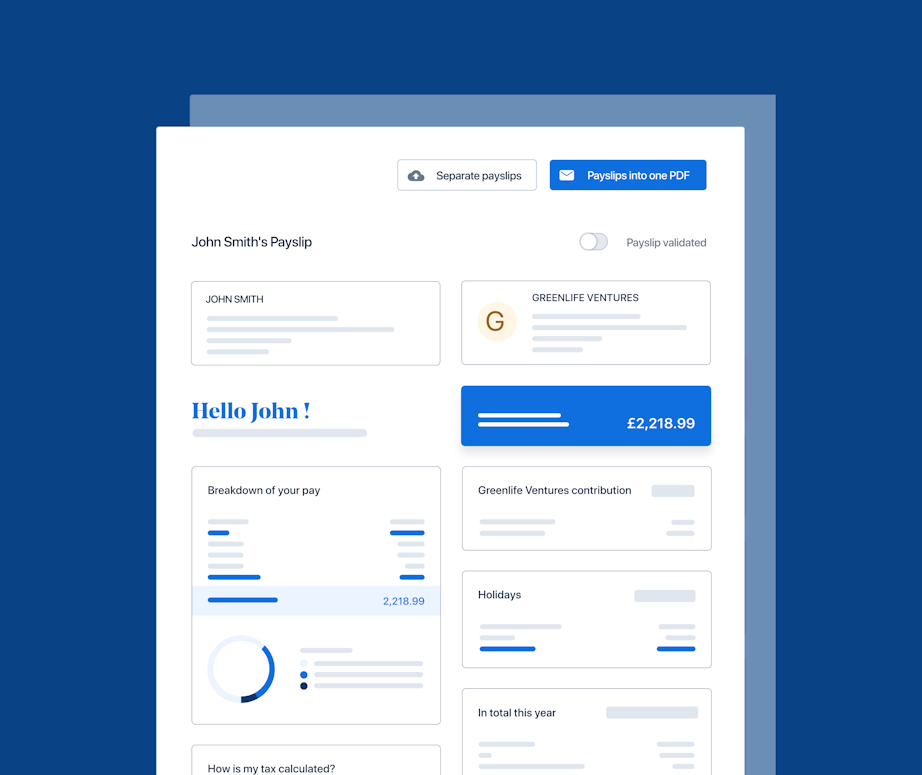A quick guide to salary sacrifice pension contributions

Pensions are becoming an increasingly hot topic and an area that requires innovation to cater to the UK’s population as it’s never too early to start putting money away.
One such innovation is the use of salary sacrifice for pension deductions. Salary sacrifice pension contributions can be an effective way for employees to save for their retirement whilst making real-time savings on their monthly pay. This article will explore what they are, who they’re for, and the potential upsides and downsides for employees and employers.
Did you know...
54% of people are worried about running out of money in retirement? Source: Retirement Report 2020
What are salary sacrifice pension contributions?
Salary sacrifice pension contributions allow employees to sacrifice a portion of their salary each month to contribute more efficiently to their pension. The employer will contribute to the pot too. Unlike other pension contribution methods, salary sacrifice contributions are taken from gross pay, which means that the employee pays less tax and National Insurance, therefore saving each month as a result of their pension contribution.
The government recently announced a rise in National Insurance contributions with the aim of funding health and social care, starting in the upcoming tax year. If the employee increases their pension contributions, the amount they pay in National Insurance will go down even further, so they could end up paying even less National Insurance than before! A recent blog article from Maji, a tool helping employers and employees optimise their pension contributions, explains how salary sacrifice can help cut your National Insurance costs.
So, how much salary can be sacrificed towards the employee’s pension?
Salary sacrifice is a contractual agreement between the employer and employee; however, the employee’s salary cannot be reduced below the national minimum wage. Statutory payments cannot be sacrificed, meaning employers will likely need to cover the sacrificed amount during statutory leave and absences. Salary sacrifice arrangement also means changing the terms of an employment contract and can impact entitlements to statutory payments.
Did you know...
40% of employees don't know they can change their pension contributions. Source: Nest 2020
On the surface, salary sacrifice pensions seem like a great way to save more money into your retirement pot every month. But it’s important to know the ins and outs before going forward with the scheme. Here we look at the pros and cons of the salary sacrifice scheme from both the employer and employee perspective.
Potential advantages from an employee’s point of view:
By reducing the pay subject to National Insurance and income tax, the savings are more tax-efficient than paying into a private pension.
The tax and National Insurance deductions are based on what employee’s earn, therefore lowering their salary lowers their tax and National Insurance contributions too.
Employees can grow their pension pot faster as it costs less to contribute.
Potential disadvantages from an employee’s point of view:
Employees must consider that reducing their income may impact their ability to borrow money for a mortgage or other personal loans.
Certain entitlements to statutory leave, such as maternity, may be impacted as these types of leave rely on earnings subject to National Insurance to calculate how much an employee is entitled to.
Not all employees can use salary sacrifice as the employee’s pay cannot be lower than National Minimum Wage.
Potential advantages from an employer's point of view:
As salary sacrifice is a reduction of the employee’s gross salary, the sacrificed amount is not included in the calculation of National Insurance allowing the employer to save on this cost.
It encourages employees to contribute to the pension scheme, with financial wellbeing for employees being a hot topic for employers.
Employers may also gain from increased staff retention rates as many salary sacrifice schemes are seen as an attractive way of contributing to a workplace pension.
Potential disadvantages from an employer's point of view:
Because it's a contractual scheme, it requires additional management and resources to set up each employee.
Employers need to be vigilant of the implications of the National Minimum Wage.
The salary sacrifice salary reduction is treated as salary and may affect common salary ratios like cost per head, salary to turnover ratio, etc.
Employers will be responsible for both employee and employer contributions when an employee is on a period of statutory leave.
"Salary sacrifice can be hugely beneficial for employers and employees due to the national insurance savings for both parties.”
FT Adviser
While salary sacrifice is a tax-efficient and cost-effective way of deducting both employee and employer pension contributions, some employers find it daunting and prone to errors. With PayFit, setting up a salary sacrifice scheme is easy, and calculations are automatic, considering all variables impacted. PayFit will also support employers in identifying employees who may fall below the NMW as a result of salary sacrifice pension contributions.
Interested in finding out more? Why not book a call with one of our product specialists?
PayFit's disclaimer
The information contained in this document is purely informative. It is not a substitute for legal advice from a legal professional.
PayFit does not guarantee the accuracy or completeness of this information and therefore cannot be held liable for any damages arising from your reading or use of this information. Remember to check the date of the last update.








